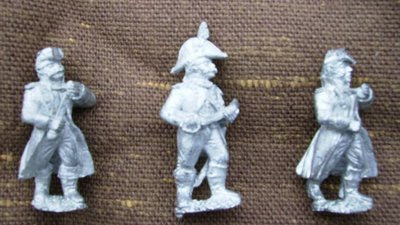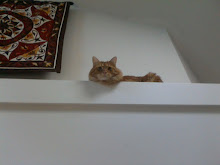Saturday, 20 December 2008
A little longer delay.
Tuesday, 16 December 2008
A brief intermission...
Thursday, 4 December 2008
New recruits..?
Wednesday, 3 December 2008
No episode today.
A J
Thursday, 27 November 2008
Tuesday, 18 November 2008
On the practical side.

Sunday, 16 November 2008
The Heart of Hetzenberg

*
Wednesday, 5 November 2008
Campaign Map - 2
Friday, 24 October 2008
Campaign map - one
Thursday, 16 October 2008
A short sabbatical.
Friday, 10 October 2008
IR 3 Kostanza
Wednesday, 8 October 2008
Conversion - job done!
Monday, 6 October 2008
Pootling onward
Friday, 3 October 2008
TARDIS Model?
Thursday, 2 October 2008
New conversion job - 3
Sunday, 28 September 2008
New conversion job - 2
Saturday, 27 September 2008
A small diversion...
*
*
*
On September 26th, 1983, Lieutenant Colonel Stanislav Yevgrafovich Petrov was the officer on duty when the warning system reported a US missile launch. Petrov kept calm, suspecting a computer error.Then the system reported another US missile launch.And another, and another, and another.What had actually happened, investigators later determined, was sunlight on high-altitude clouds aligning with the satellite view on a US missile base. In the command post there were beeping signals, flashing lights, and officers screaming at people to remain calm. According to several accounts I've read, there was a large flashing screen from the automated computer system saying simply "START" (presumably in Russian).
*
*
*
Thursday, 25 September 2008
New conversion job
Tuesday, 23 September 2008
Tricorn mold - 2

Friday, 19 September 2008
Tricorn molds.
Tuesday, 16 September 2008
The Tuhellenbach Hussars (Regiment Kramer)
 For Jean-Louis, here we have the prospective Hussar regiment of the Markgraaf's army, the Tuhellenbach Hussars, led by their able inhaber, Casimir Kramer. Not the sharpest tool in the box, Kramer nevertheless possesses great dash and courage. Whether his men live up to his example will remain to be seen.
For Jean-Louis, here we have the prospective Hussar regiment of the Markgraaf's army, the Tuhellenbach Hussars, led by their able inhaber, Casimir Kramer. Not the sharpest tool in the box, Kramer nevertheless possesses great dash and courage. Whether his men live up to his example will remain to be seen. *
The regimental uniform is based to some extent upon that of the French 3rd Hussars as worn during the Second Empire period. The tunic is dove gray; the pantaloons shown above are close to the garance color favored by French troops in that era. Most French hussar regiments were issued sky-blue uniforms but the 3rd Hussars resisted the change. I've shown Kramer's Hussars pelisse in this color.
Monday, 15 September 2008
Onwards and upwards.
Saturday, 13 September 2008
The Assembling Might of the Markgraaf
 On an upland heath IR 1 Prinz Georg and IR 2 Margravine Josefina's Own maneuver, screened by the Sobelsburg Jagers...
On an upland heath IR 1 Prinz Georg and IR 2 Margravine Josefina's Own maneuver, screened by the Sobelsburg Jagers... ...watched critically from the rear by Babbington's Legion.
...watched critically from the rear by Babbington's Legion.*
Friday, 12 September 2008
Wednesday, 10 September 2008
Conversion job - nearly done
Sunday, 7 September 2008
Pootling on...
Wednesday, 3 September 2008
IR2 - Margravine Josefina's Own Regiment of Foot
Tuesday, 2 September 2008
Conversion job - 4
Saturday, 30 August 2008
The Bridge at Kimmelsbrücke.
 An aerial view.
An aerial view. *
*Thursday, 28 August 2008
Conversion job - 3

And so it begins. After two hours of purgatory trying to model tricorns out of Milliput followed by an hour of dremmel-work the following day, I achieved the above results. Milliput is good but it has the annoying habit of sticking to anything but what I want it to stick to! Give the stuff its due, it does set hard and stay in place. The queues of hair worn in this era I replicated by using spackle powder mixed with a drop of Klear/Future floor polish, pushing the resulting concoction around with a brush until I got what I wanted. Unconventional yes, but who cares? Not I! It works and takes paint well.
Tuesday, 26 August 2008
Conversion job - 2.
 Standard bearers with untouched officer for comparison.
Standard bearers with untouched officer for comparison. A bit blurry but this shows the shape of the modified headgear compared with the fifer on the left.
A bit blurry but this shows the shape of the modified headgear compared with the fifer on the left. The Commanding Officer and a soldier to be.
The Commanding Officer and a soldier to be.Monday, 25 August 2008
Conversion job - 1
Thursday, 21 August 2008
The Bridge Project - assembled.
 A boatman's eye view .
A boatman's eye view .
The three main components.
*
Progress is being made! All the major construction work is finished. It only remains to make the quaysides from which the bridge will spring, and I'll begin work on those this weekend using 1" blue insulation foam as a base. Once all is assembled, the bridge will be painted with Klear (Future in the US) polish to seal the plaster, followed by blocking-in the stonework with a sandy-ochre color using Crown-brand "eggshell" paint designed for use on plasterwork and wood. A small test patch can be seen on the right of the middle picture. All finer paintwork such as weathering effects, the tower sides, timbers and roofs will be done in acrylics. The interiors of the spans were painted before being fixed in place.
*
As mentioned before, all major construction was done using plaster casts made from the versatile Hirst Arts molds. The roofs are of card with the tiles cut from individual strips and the whole treated with Klear for additional strength. For ease of transport the model was built in three sections which will rise to five when the quaysides are done. This has the added benefit of allowing me to insert different central spans over time, such as a broken one showing a bridge demolition, and perhaps a Dutch-style double drawbridge to allow passage by masted vessels. The figures posing on the bridge are natives from my Daftest Africa campaign world awaiting their basework.
Sunday, 17 August 2008
Sobelsburg Jagers
Friday, 15 August 2008
Babbington's Legion - almost...
Thursday, 14 August 2008
Babbington's Legion - almost there.
 One advantage to getting some half-painted figures - less work to do! Here're a couple of pictures of Babbington's Legion, the "White Company" or mercenary regiment that has just accepted service with the Markgraaf of Dunkeldorf-Pfuhl.
One advantage to getting some half-painted figures - less work to do! Here're a couple of pictures of Babbington's Legion, the "White Company" or mercenary regiment that has just accepted service with the Markgraaf of Dunkeldorf-Pfuhl. 
Monday, 11 August 2008
Markgravate light infantry (Sobelsburg Jagers).
*
A certain amount of snobbery exists in the army command. There's a tendency to look upon the jagers more as tradesmen, there to do a messy but necessary job, rather than soldiers. This is resented by the jagers who rightly feel they perform an arduous duty for scant reward.
Wednesday, 6 August 2008
The Bridge project - ongoing.
Tuesday, 5 August 2008
Babbington's Legion-to-be.
Sunday, 3 August 2008
Under construction - 1
 The Central span arches with basic components for comparison.
The Central span arches with basic components for comparison. Wednesday, 30 July 2008
Forward planning.
Saturday, 26 July 2008
Another review picture.

Another shot of the current units of the Hetzenberg army. IR1 Sleibnitz leads IR2 Wohl in review past Brigadier-General Schmaltz, watched by the Liebgarde Grenadiers and the Bishop of Guggenheim's Regiment of Horse. The row of town houses is scratch-built from foamcore, with cartridge paper timberwork, all painted with craft acrylics. The model will be finished with premade doors and windows.
Friday, 25 July 2008
There and back again...

Due to the complexities and sheer bureaucratic obfuscation of the post 9/11 immigration rules to the USA, I'm back in the UK until the paperwork goes through. In the meantime, the Hetzenberg army is resting in barracks in St. Louis, Missouri. The picture shows the review of (foreground, left) IR 1 Sleibnitz and (foreground, right) IR 2 Wohl, by the First Brigade commander, Brigadier-General Schmaltz. To their rear stands the Bishop of Guggenheim's Regiment of Horse and the Leibgarde Grenadier regiment. All troop figures are RSM95 by the Dayton Painting Consortium. The figures for the Guggenheim command and the General Schmaltz vignette are Holger Eriksson.
Wednesday, 16 July 2008
"Monstrous regiments?"
Saturday, 12 July 2008
Pootling along...
Saturday, 5 July 2008
A street in town...
Tuesday, 24 June 2008
A street in town.
 The Hetzenberg Liebgarde Grenadiers lead the march past the tower and rathaus, followed by the Bishop of Guggenheim's Regiment of Horse.
The Hetzenberg Liebgarde Grenadiers lead the march past the tower and rathaus, followed by the Bishop of Guggenheim's Regiment of Horse.*



























